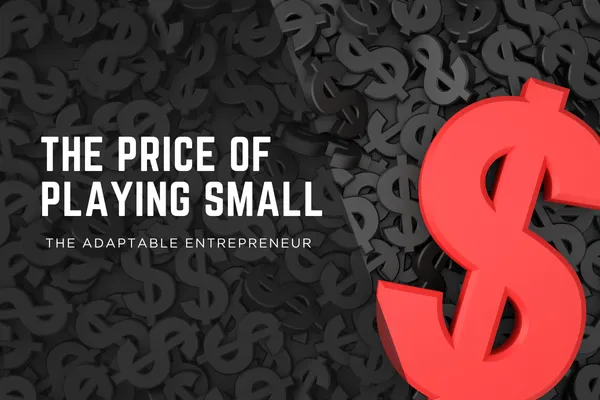
The Price of Playing Small
“If your business is growing—but your profit, peace of mind, or confidence isn’t—your pricing is probably the problem.” - Shawn Dill
The Price of Playing Small

Most entrepreneurs don't set out to undercharge and get paid less than their worth.
They’re undercharging because they’re afraid.
Afraid of rejection.
Afraid of being seen differently.
Afraid their success will finally demand they take themselves seriously.
I’ve coached countless entrepreneurs through pricing shifts—people who were booked out, burned out, and still wondering why they never felt ahead.
And every time we dig deeper, the issue isn’t about numbers. It’s about worth.
If that’s you, let’s walk through what’s really happening—and what’s on the other side.
1. You’re Not Selling a Service. You’re Selling Confidence.
Let’s be clear:
Clients don’t buy because you’re the cheapest option.
They buy because they believe you can help them solve a problem they care about.
And the confidence you bring into that conversation—whether it’s in a proposal, on a call, or baked into your pricing—is part of what they’re evaluating.
When you undercharge, you’re not making yourself more accessible.
You’re making your offer less trustworthy.
2. “But What If Everyone Leaves?”
That’s the most common fear I hear when I suggest a client raise their prices.
One of my coaching clients had been undercharging for years.
She had a full roster, glowing testimonials, and a steady stream of referrals—yet she was constantly anxious about cash flow and burned out from overdelivering.
We restructured her offer and raised her prices.
She was terrified.
But here’s what happened:
Not one existing client left
She started attracting more committed, ideal-fit clients
And she finally stopped feeling resentful about her work
Raising your prices doesn’t repel the right people. It helps you stop over-serving the wrong ones.
3. The Real Risk Is Staying Small
Staying underpriced might feel safe, but it’s the most expensive decision in your business.
It costs you:
Time
Energy
Capacity
Creativity
Confidence
It’s hard to step into CEO thinking when you’re stuck operating from scarcity.
And it’s nearly impossible to scale a business when your revenue doesn’t match your effort.
4. What Raising Prices Actually Signals
Raising your prices isn’t just about revenue. It’s about leadership.
It signals:
“I know what this is worth.”
“I’m no longer available for burnout.”
“I’m building something sustainable—not something that just looks busy.”
Clients pick up on that. And the right ones?
They’ll respect it.
5. How to Raise Prices with Integrity
If you’re ready to raise your prices, here’s how to do it thoughtfully:
Give existing clients notice — You can honor their loyalty by offering a grace period or grandfathered rate (temporarily), but don’t avoid the conversation.
Communicate the value — Make sure your offer is clearly tied to outcomes, not just time or deliverables.
Raise your internal standards too — Pricing isn’t the only thing that needs to grow. Your boundaries, systems, and expectations should grow with it.
Final Thought:
Raising your prices lets you show up fully, deliver powerfully, and build sustainably.
If your business is growing—but your profit, peace of mind, or confidence isn’t—your pricing is probably the problem.
And the fix a mindset shift.
So the real question is:
Are you ready to stop undercharging for exceptional work?
Because the moment you do, everything starts to change.
